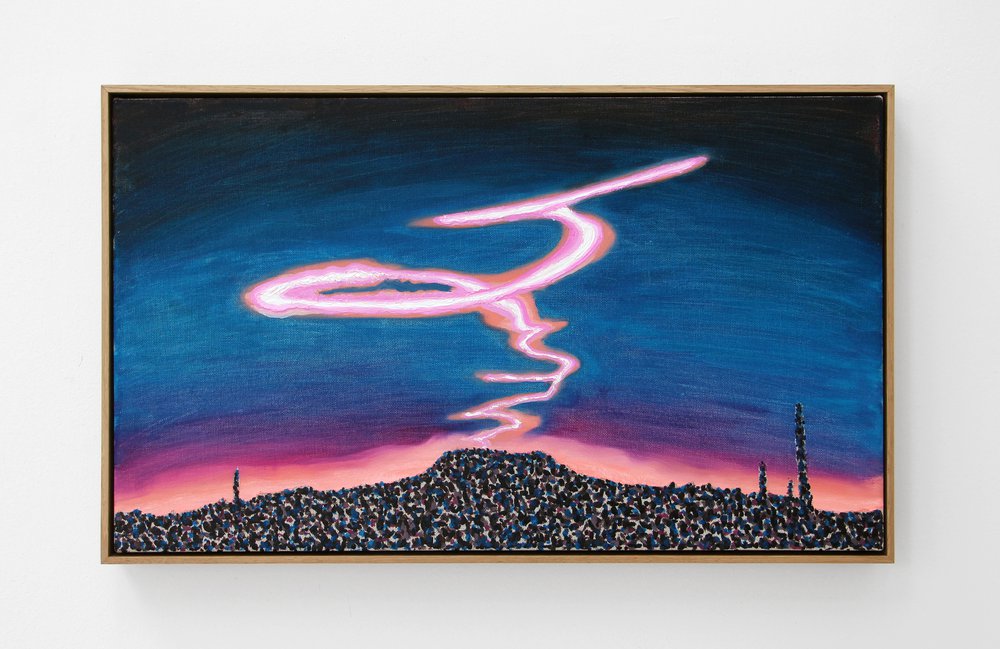
“Oh bliss, bliss and heaven! Oh, it was gorgeousness and gorgeousity made flesh. It was like a bird of rarest-spun heaven metal or like silvery wine flowing in a spaceship, gravity all nonsense now. As I slooshied, I knew such lovely pictures!”– Alex, A Clockwork Orange (1962), Anthony Burgess
“People confuse the ability to speak with the ability to say something. I don’t start from a position of knowing. And I don’t always end up there either.”– William Monk
How does one shake off or come to terms with these images? Like the scribbled notes in the thrift-store novel or student textbook, Monk engages such subcultural marginalia. In doing so, he creates contemporary images that reposition the “out there” of the counter-cultural past, with the ideological fall-out of the now, only this time in paint. The writer Anthony Burgess created his own teenage cant or gang-speak in the novel A Clockwork Orange (1962). Based on Cyrillic script, the gang (the Droogs) invented their own way of communicating. As with many private languages, it dictated who belonged to the tribe and also introduced a peculiar argot and blunt poetry to the resultant Kubrick movie. The Droog’s “to slosh” was to hear or overhear, to listen in, and to define meaning in the language or music of others. In Alex’s case, it’s the terrifying images he conjures from his listening to Beethoven’s 9th Symphony (1822) that reveal his particular psychosis and predilection toward the violent. For Monk, his image, his “sloshing,” his listening and observation of the world, is searching for some new vision and form recalled from a personal dream-state or the hypnagogic mode of cinema to produce, as Alex the chief Droog would archly have it, “such lovely pictures!”

